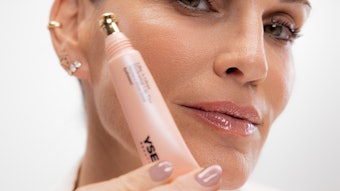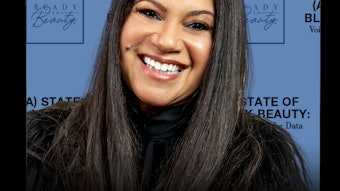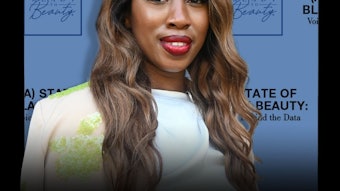Creating targeted audience profiles is the first step to gaining an in-depth understanding of target consumers, as well as ensuring money isn’t wasted trying to be too many things and to the wrong consumers.
Flesh out audience profiles with key questions. Each of your well-developed profiles should then be used to evaluate all creative and marketing decisions and enable you to think objectively.
In today’s crowded marketplace, beauty brands have an extremely limited time to engage consumers. Therefore, it’s imperative to captivate your “it” girl or guy quickly and easily.
To do this, marketers need to understand what makes their consumers tick by clearly defining targeted audience profiles. The goal of this process is to gain an in-depth understanding of your consumers on all levels—from their demographics and motivations to how and where they shop. This knowledge will lay the foundation for all strategies moving forward, allowing a unique voice and visual design to emerge naturally. Your brand will be set up for success, containing all of the visual and verbal triggers to speak to your consumers directly and succinctly.
Painting a Specific Picture
Creating targeted audience profiles begins with being honest about who your core consumers are. The profiles may be who your consumers are currently or who you want them to be. But once you identify your segments, make a decision and go for it. Don’t take an “in the middle” approach in an effort to appease everyone. Too often brands cast too wide of a net, which almost always leads to lackluster creative solutions that fail to speak to anybody. Furthermore, lack of focus may cause you to lose money in the long run, as you hopelessly explore all channels and opportunities with little return.
In contrast, creating three to four narrow consumer segments will open doors to innovative marketing opportunities worth pursuing. Here’s an example of a profile: an unmarried woman in her early thirties that lives in an urban area and makes around $60,000 a year in an industry such as marketing or public relations. She shops at chain beauty shops such as Sephora and leads a healthy lifestyle that includes yoga and running. This example starts to paint the picture of the kind of specificity that will be most effective. It goes far beyond the generic consumer segments we often see, such as “women 20–60” or even “18–25,” which are both too broad because age alone is not enough of a qualifier.
Questions to Ask
Once the profiles have been identified at the top level, you can flesh them out by asking key questions. Answers to these questions can come from research you may already have or obtained from direct interviews.
You should start by delving into details about your consumers’ lives. Are they married or single? How old are they? Where do they live? What are their professions, and what is their income level? How do these things impact their daily routine? Where do they shop, and what brands do they come in contact with most frequently?
After you have a good sense of the demographics, you should then figure out how your consumers discover new things. Do they purchase similar products or services online or in person? Do they receive recommendations from friends or from trusted professionals? How active are they on social media? The knowledge gained here will point you toward the marketing and sales channels worth investigating.
Now, consider what drives your consumers. Learn about their pain points, aspirational goals and emotional motivators. Getting to the bottom of these questions is the key to unlocking your brand’s tone of voice. All messaging and copy can be written to strike the specific emotional chords that are discovered during this crucial stage, and product or service benefits also can be shaped in a way to directly align with these drivers. Finally, determine all the challenges that you will need to overcome in order to reach your consumer. How difficult will your target consumers be to reach? Are they resistant to trying new things? Is language a barrier? Be honest about the challenges you face, and adjust your strategies along the way to make sure you’re solving issues as they arise.
Putting It Into Practice
Now, the fun part—synthesizing your data and making it work for you! Each of your profiles should be used to evaluate all creative and marketing decisions, enabling you to think objectively. The profiles can be most helpful in determining a brand tone of voice, brand architecture, story hierarchy and visual design.
Brand tone of voice is the attitude of the brand—its unique verbal personality. Should the tone be playful, authoritative or clever? Use your profiles to make an educated decision that will inform all of your messaging—from headlines to product descriptions. You should be using language to frame your products in a way that resonates with your target audience and their emotional motivators. For example, if you have a product with a proprietary technology, industry speak on scientific formulation might resonate with sales reps but it should probably be marketed differently to consumers. In contrast, a more generic product can be made unique with positioning and language that speaks directly to your consumers’ key drivers.
From your research, you should have a good understanding of how your target consumers process information. Capitalize on this knowledge to inform your brand architecture. Your offering should be structured in a way that they will either directly play on emotional drivers and/or work within a paradigm that your consumers are familiar with. If there are brands similar to yours, you will need to decide whether to structure your offering in the same way or differently to stand out. Sometimes the reason why people aren’t responding to something may be because it isn’t a best practice. Be sure to address all factors when making this decision.
Along the same lines, think about your consumers’ values and use them to determine the hierarchy of stories you want to tell. Consider a brand’s website as an example: At the wireframing stage, you should be thinking about how each of your target profiles will navigate through the site and place stories and imagery accordingly. Think about exactly what information they will get with one, two and three clicks in. Everything your consumer cares about should be obtained in three clicks, or you may have to adjust your strategy.
Finally, the visual design should emerge naturally from your research as well. Analyze the visual trends you see within the places your consumers shop and the brands they come in contact with—what are the styles, colors and typography used? Seeing all of these materials displayed side by side will be immensely helpful in determining an informed design strategy. Decide whether it is best to break away from the pack or go head to head with a competitor.
As shown time and time again, targeted audience profiles are invaluable tools for the success of any brand. They set the foundation for all visual and verbal strategies, freeing us from personal bias and enabling us to make clear objective decisions that will have a real return.
Sheri L. Koetting is the co-founder and chief strategist of MSLK, a marketing and design agency based in New York. MSLK specializes in helping beauty brands find their voice in today’s crowded marketplace through 360° brand positioning—from overall brand strategy to brand identity, packaging, retail experience, websites and social media campaigns. [email protected]; www.mslk.com










